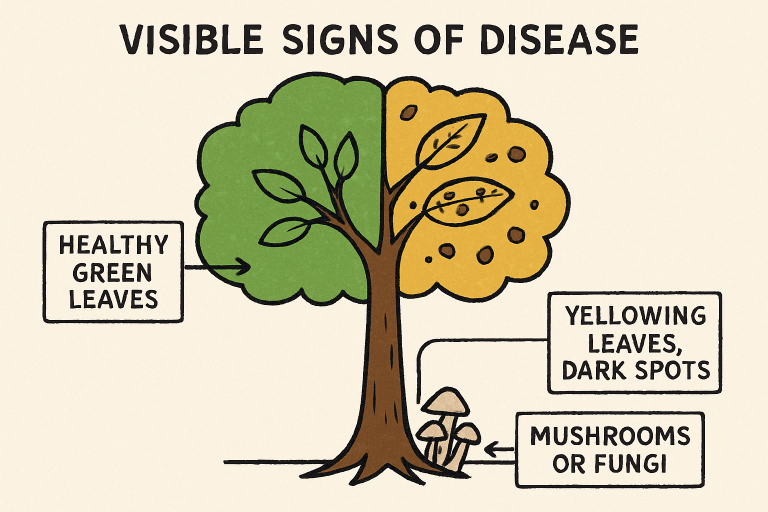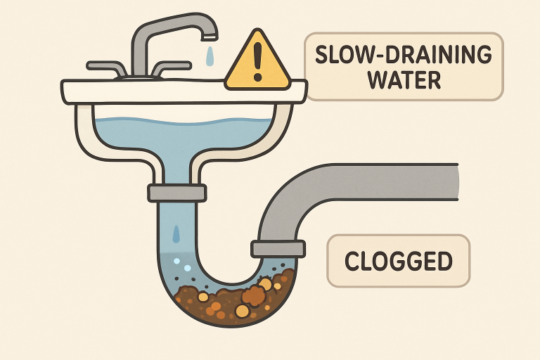Healthy trees are the core of beautiful and safe outdoor spaces. Recognizing the signs of tree disease early can make the difference between preserving the integrity of your landscape and losing a cherished tree. If you’re invested in the well-being of your trees but lack clarity on disease detection or prevention, a professional tree survey Trophy Club can offer invaluable guidance. Here’s how you can stay one step ahead of common tree problems and ensure your trees thrive for years to come.
Early intervention is not only about saving trees but also about safeguarding your property’s value and the surrounding environment. With an informed approach, you can protect your greenery and minimize the risk of disease spread in your landscape.
Table of Contents
Common Symptoms of Tree Diseases
Spotting tree diseases early prevents the spread to other plants and saves money on intensive treatments. These are the warning signs every property owner should monitor:
- Leaf Discoloration and Spots: Unusual changes in leaf color, such as yellowing, browning, or black spots, are often the first red flags. For example, diseases like anthracnose cause round, dark lesions on leaves, frequently leading to premature leaf drop.
- Wilting and Dieback: Branches or leaves that wilt or shrivel — even when adequately watered — may indicate underlying fungi or bacteria attacking the tree’s vascular system. Dieback, which causes the tips of branches to die off, can be an early symptom of serious issues such as fire blight.
- Bark Abnormalities: Peeling, cracking, or discolored bark suggests cankers or infections. These openings can become entry points for pests and further disease.
- Fungal Growths: Mushrooms, conks, or similar growths on the tree trunk or around the base signal potential internal decay and root rot.

Specific Tree Diseases and Their Indicators
A deeper understanding of individual diseases makes identification and treatment far more effective:
Anthracnose
This fungal infection primarily impacts deciduous trees like sycamores, oaks, and ashes. It manifests as black or brown sunken lesions along the leaves and sometimes on flowers and fruits. Outbreaks typically occur during cool, wet weather in spring, leading to leaf drop and twig dieback.
Powdery Mildew
Powdery mildew, recognized by its distinctive, flour-like white powder coating on leaf surfaces, stunts leaf growth and can eventually result in defoliation. Trees growing in shaded or highly humid environments are most vulnerable.
Root Rot
This condition stems from persistently soggy soil, impairing root function. Symptoms include stunted growth, yellowed foliage, and general vitality loss. Signs above ground often aren’t visible until the disease is well advanced. Improving soil drainage and keeping tree root zones from becoming waterlogged are essential prevention tactics.
Practical Steps for Monitoring Tree Health
Consistent monitoring is crucial for early detection and response to disease threats:
- Routine Inspections: Inspect your trees at the start of each season. Look for differences in leaf color or structure, abnormal growth patterns, and changes in bark texture.
- Use of Tools: Equip yourself with a magnifying glass to spot minute pests or early leaf lesions. A soil moisture meter can prevent over- or under-watering, helping avoid rot and stress.
- Professional Assessments: If persistent symptoms arise or an infection appears to be severe, it is always advisable to bring in a certified arborist for a comprehensive tree health assessment.
Preventive Measures to Avoid Disease Spread
Vigilance and best practices are your best allies in keeping your trees disease-free:
- Proper Pruning: Remove dead or infected limbs to enhance airflow and sunlight penetration in the canopy. Always prune with sanitized tools to avoid spreading pathogens.
- Sanitation: Collect and dispose of fallen leaves, twigs, and fruit that may harbor disease. Cleaning and pruning equipment between cuts minimizes the risk of transferring disease from tree to tree.
- Soil and Water Management: Prioritize well-drained, fertile soil and water trees at ground level rather than overhead to reduce fungal risk. Avoid leaving soil too damp, which encourages root disease.
Following these strategies reduces the likelihood of disease outbreaks and supports robust, long-lived trees. Consistent care, early detection, and professional guidance are key to preserving the health and beauty of your trees for years to come.


